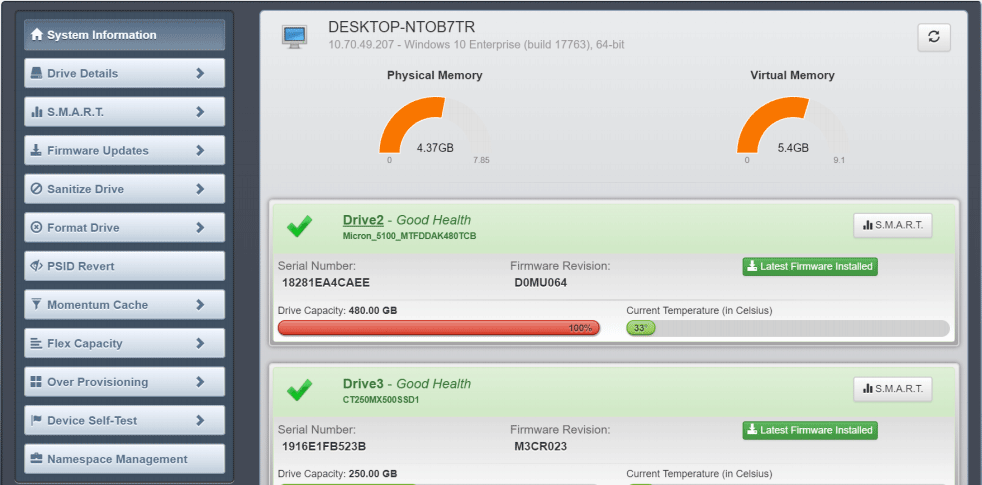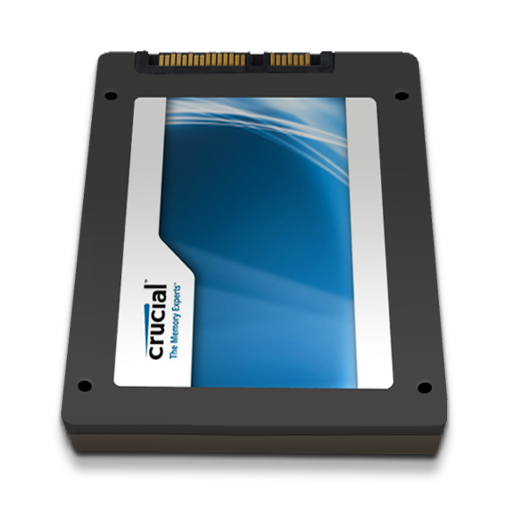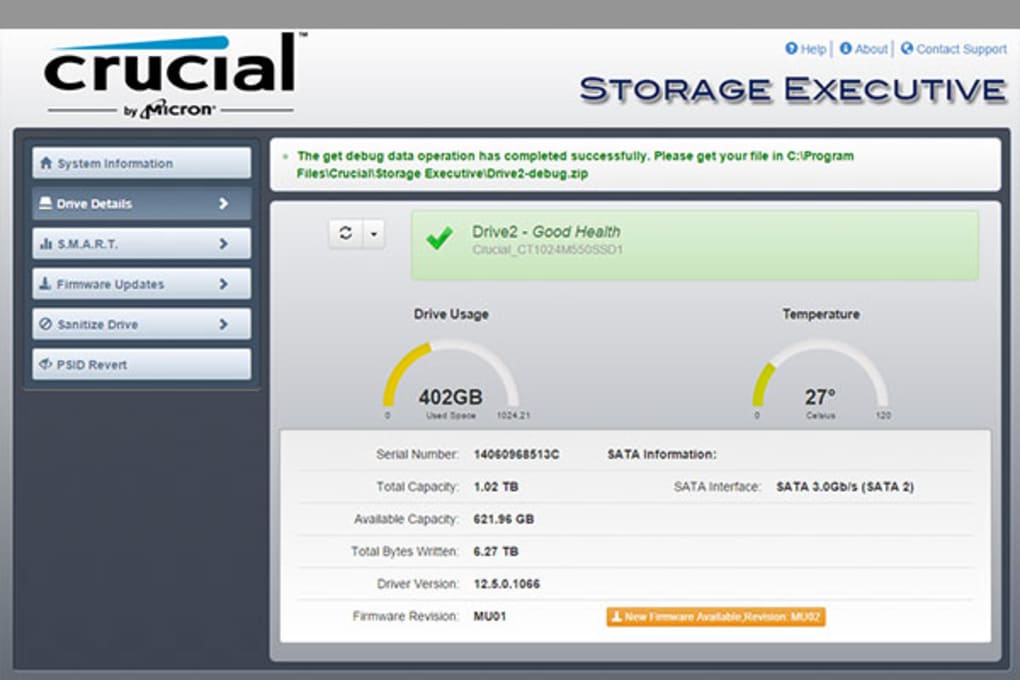

- CRUCIAL STORAGE EXECUTIVE BLUE SCREEN DRIVER
- CRUCIAL STORAGE EXECUTIVE BLUE SCREEN PRO
- CRUCIAL STORAGE EXECUTIVE BLUE SCREEN WINDOWS 7
The greatest influence on NAND longevity in an SSD comes from small transfer random writes. Momentum Cache combines smaller write transfers into bigger ones when system memory is available to lessen the effect of small random writes on the NAND. Other SSD design restrictions are addressed by Momentum Cache. When the drive activity is low, the writes are moved from the cache to the SSD, creating a buffer to distribute heavy workloads over time and enhancing burst performance. Almost all writes that are sent to the SSD are cached by Momentum Cache, which corrects it inefficiency. It is especially obvious in drives with lower densities that have fewer parallel access points to NAND die. In general, SSDs perform better when reading data instead of writing data. It optimizes input/output (I/O) data by storing it in system memory and then consistently committing it to the SSD when more bandwidth is available.
CRUCIAL STORAGE EXECUTIVE BLUE SCREEN DRIVER
Momentum Cache controls all writes and reads between a compatible SSD and the system as a software driver that is installed on Windows 1 operating systems. After that, the information is permanently stored on the SSD after being "flushed" there.

The Crucial SSD serves as the OS's boot drive, but if the OS has to write data there, the data is really written to that particular area of DRAM (which is much quicker). Momentum Cache will receive a piece of your DRAM when you turn on the option, according to Storage Executive.

When Momentum technology is used, the drive's sequential read and write performance is astounding, with reads in the ATTO benchmark increasing from 561 MB/s to 1,652 MB/s and writes from 516 MB/s to 1,879 MB/s. Reads also experience a significant improvement, particularly 4K reads. Storage Executive, a tool from Crucial, can be used to toggle the technology on or off.Īs you can see, activating the Momentum Cache has a remarkable impact on benchmark results. Up to 25% of the system's memory will be used by Momentum Cache, but no more than 4GB. In order to improve burst speed and get around the fact that SSDs normally have greater read performance than write, Crucial's Momentum Cache technology is a sophisticated software driver that dynamically uses unused system memory. Up to 4 GB of system memory can be used by the cache or 25% of it.
CRUCIAL STORAGE EXECUTIVE BLUE SCREEN WINDOWS 7
The proprietary software Crucial Storage Executive, which needs Microsoft Windows 7 or later, is responsible for managing Momentum Cache. The SSD performs better due to the high-speed DRAM cache's reduction in I/O latency. Users can utilize it to allocate a portion of their DRAM to accelerate their SSD. There were also some I/O errors opening some of the tabs in that program.Īt this point, I'm really just curious as to what's wrong with my drive I put it back in my laptop and now it "works" but sometimes still boots into the bios and I have to restart it a few times for it to boot into Windows.Momentum Cache is a Crucial-developed technology that is exclusive to SSDs bearing the Crucial brand. The program says the drive is in good health, but SMART values were not able to be shown, and every value was a 0. Using Crucial Storage Executive, I updated the P1 to the latest firmware version as of yesterday (07/06). I confirmed that the problem was the drive itself by putting it into both of the M.2 slots in my desktop mobo to test them, with both slots saying it was empty when I had the SSD in it.

Everything seems fine after the refresh, but I once again got a blue screen randomly, then it was back to the bios with an undetected boot drive. I could now boot into safe mode, do nothing, and restart, and now everything is "fine" but after a while I would get the second and third blue screens, so I decided to refresh Windows (keeping my files). Now I could get into the reset menu, but if i boot normally, it stops getting detected by the bios until a few more reboots after that. But after a few more reboots, the drive eventually started automatic repairs, although unsuccessfully. After a few reboots, I decided to remove the drive and reseat it (works for old cartridge games, right?) with no success. The first time I've encountered a blue screen was on opening the lid, browsing Firefox for a bit, then everything slowed to a crawl and eventually froze.Īt this point I restarted the computer only to boot into the bios with no drive detected. Symptoms include various random blue screens with error codes "DPC_WATCHDOG_VIOLATION," "BAD_SYSTEM_CONFIG_INFO," "KERNEL_DATA_INPAGE_ERROR," and "WHEA_UNCORRECTABLE_ERROR".
CRUCIAL STORAGE EXECUTIVE BLUE SCREEN PRO
So I've been having problems with my P1 SSD in my Asus UX480FD (Zenbook Pro 14) laptop. Disclaimer: Posting this in the Storage Forum instead of Troubleshooting because I've outright bought a new drive to replace my SSD and this is more out of curiosity than wanting to solve it.


 0 kommentar(er)
0 kommentar(er)
